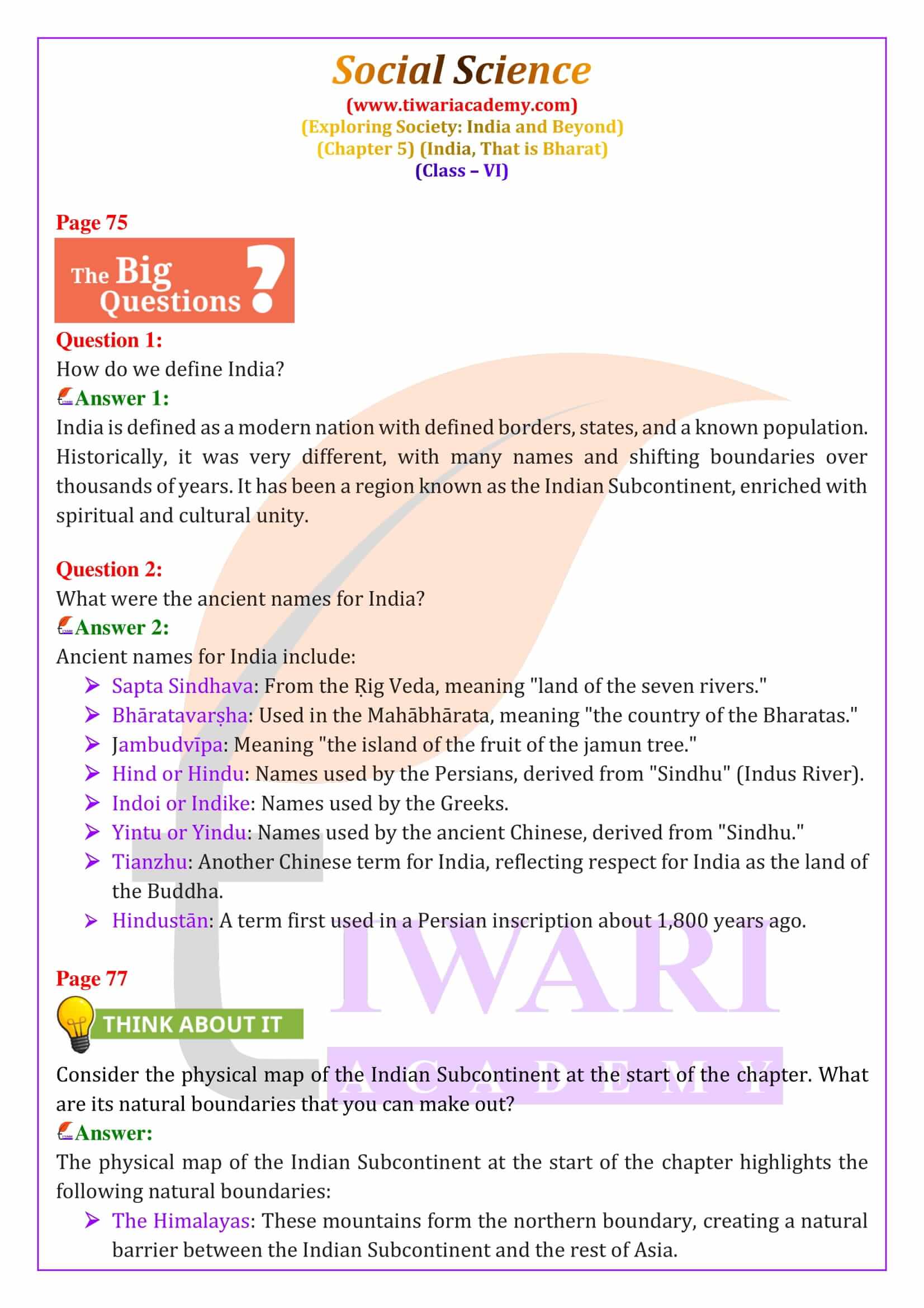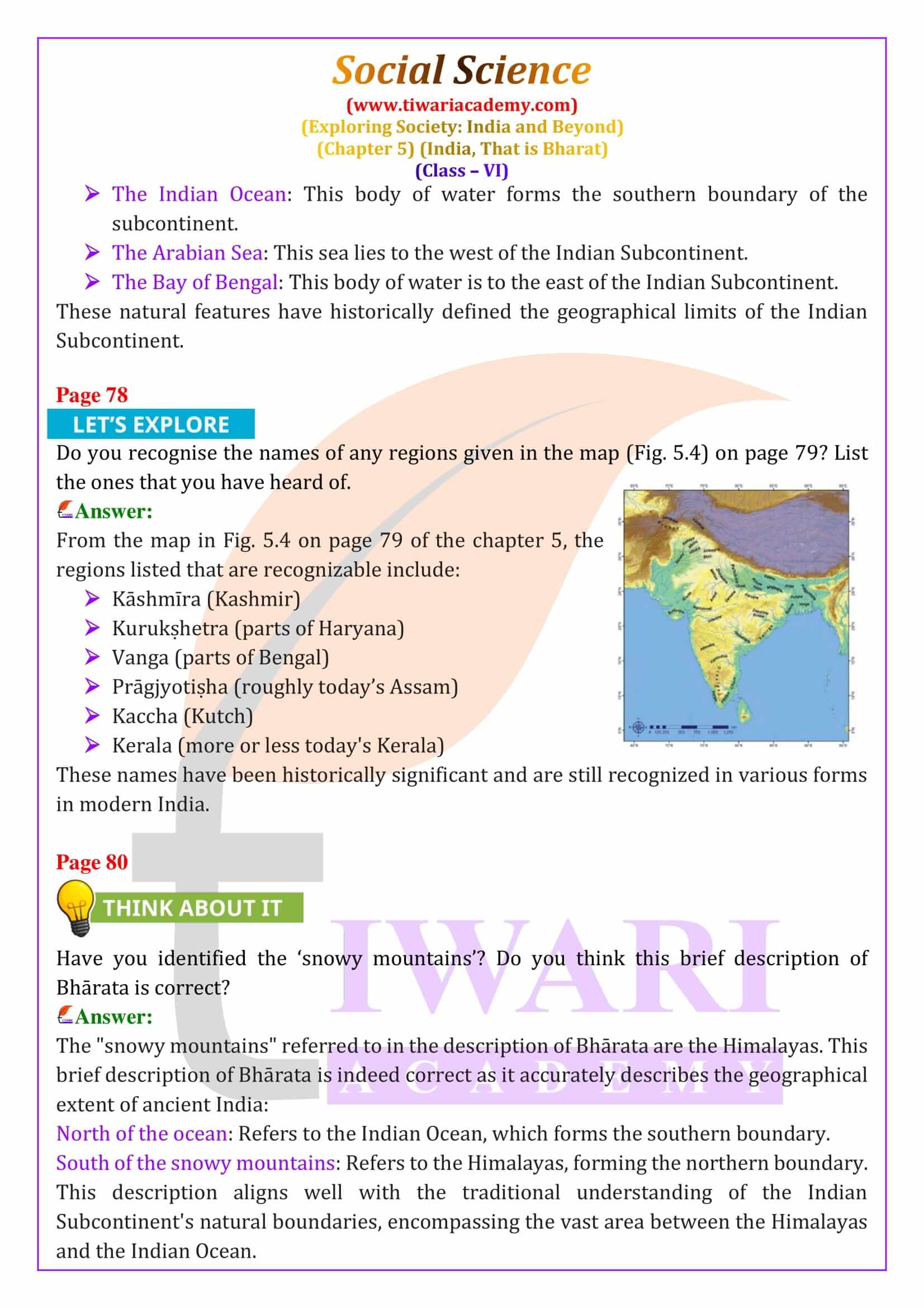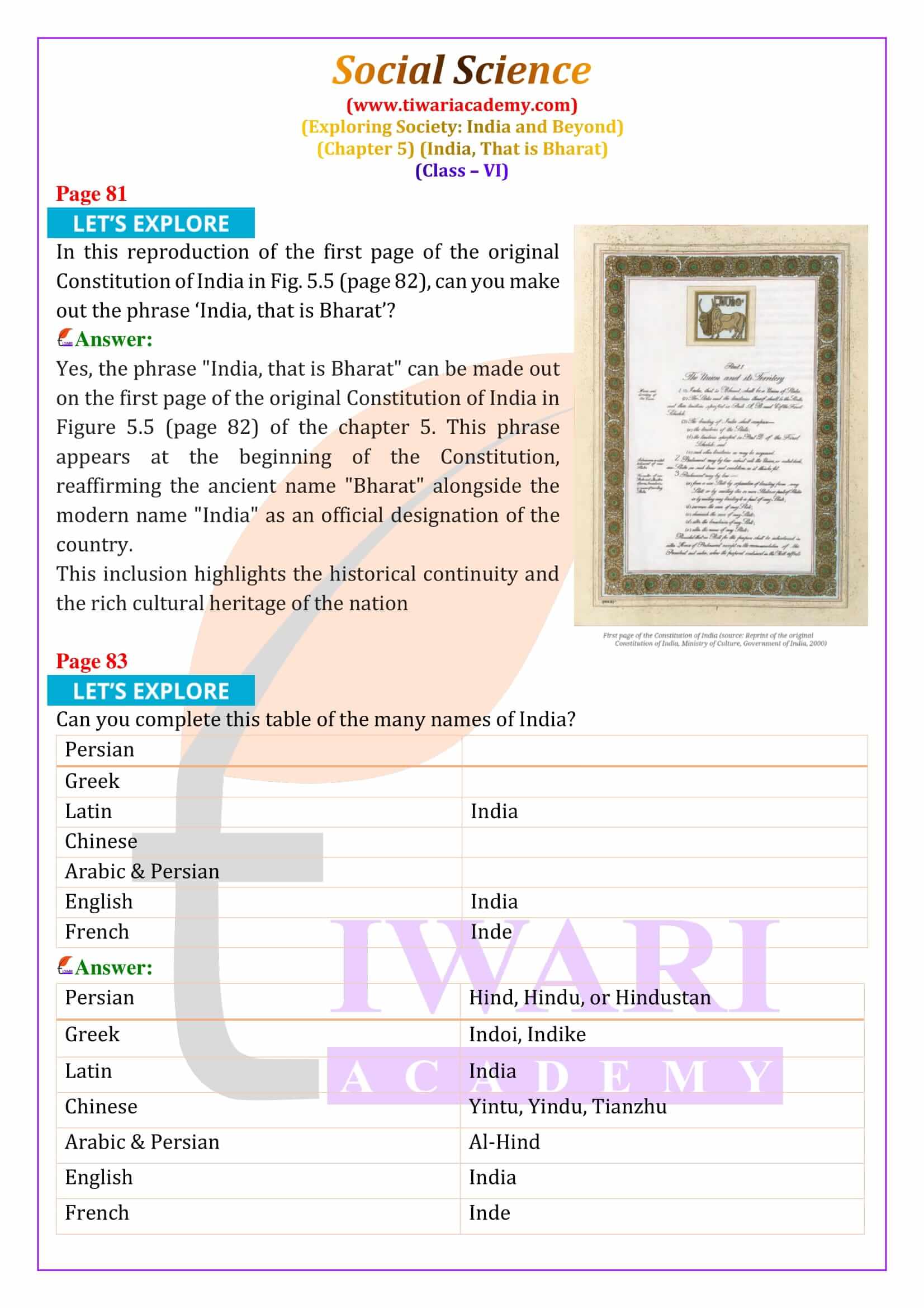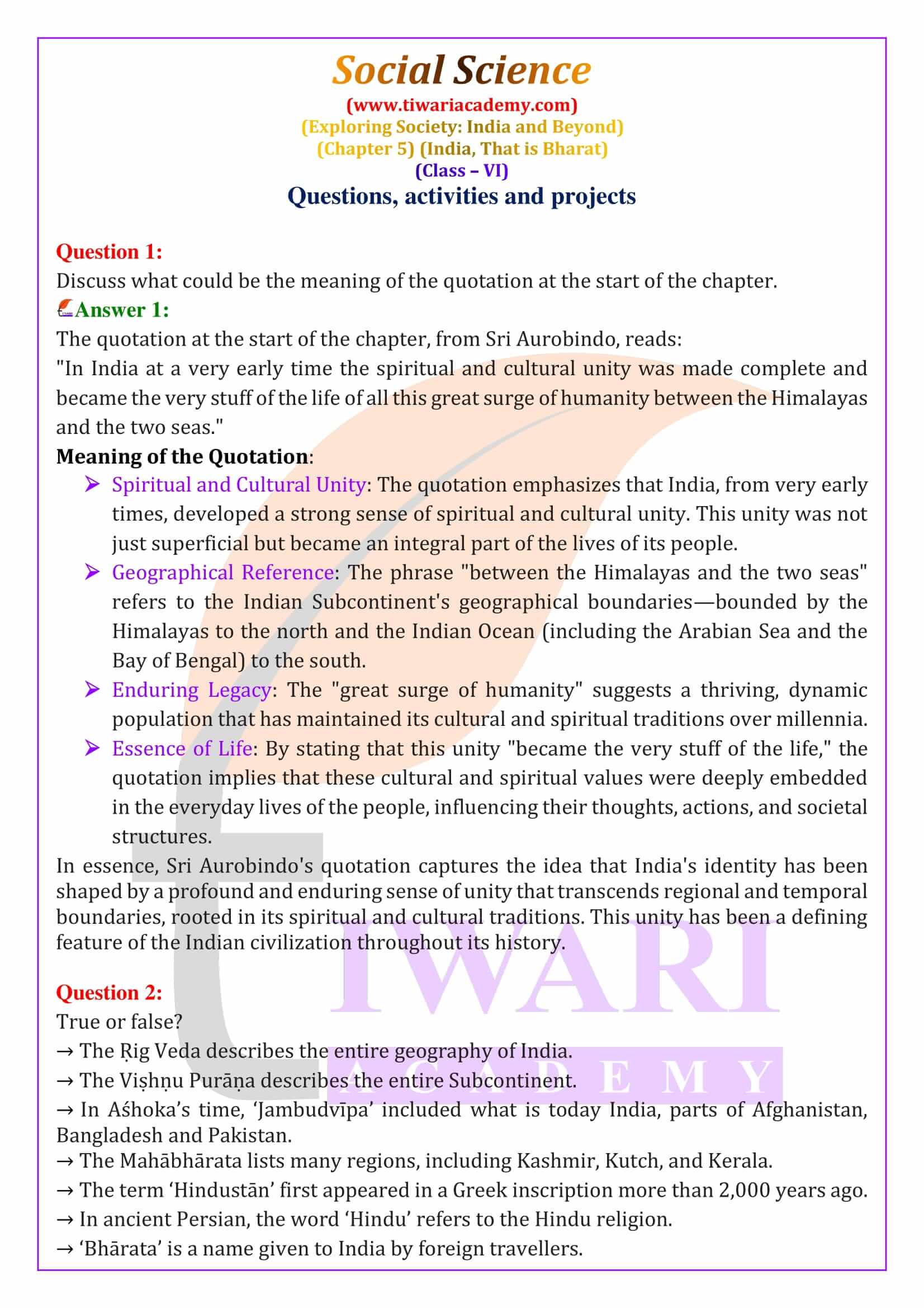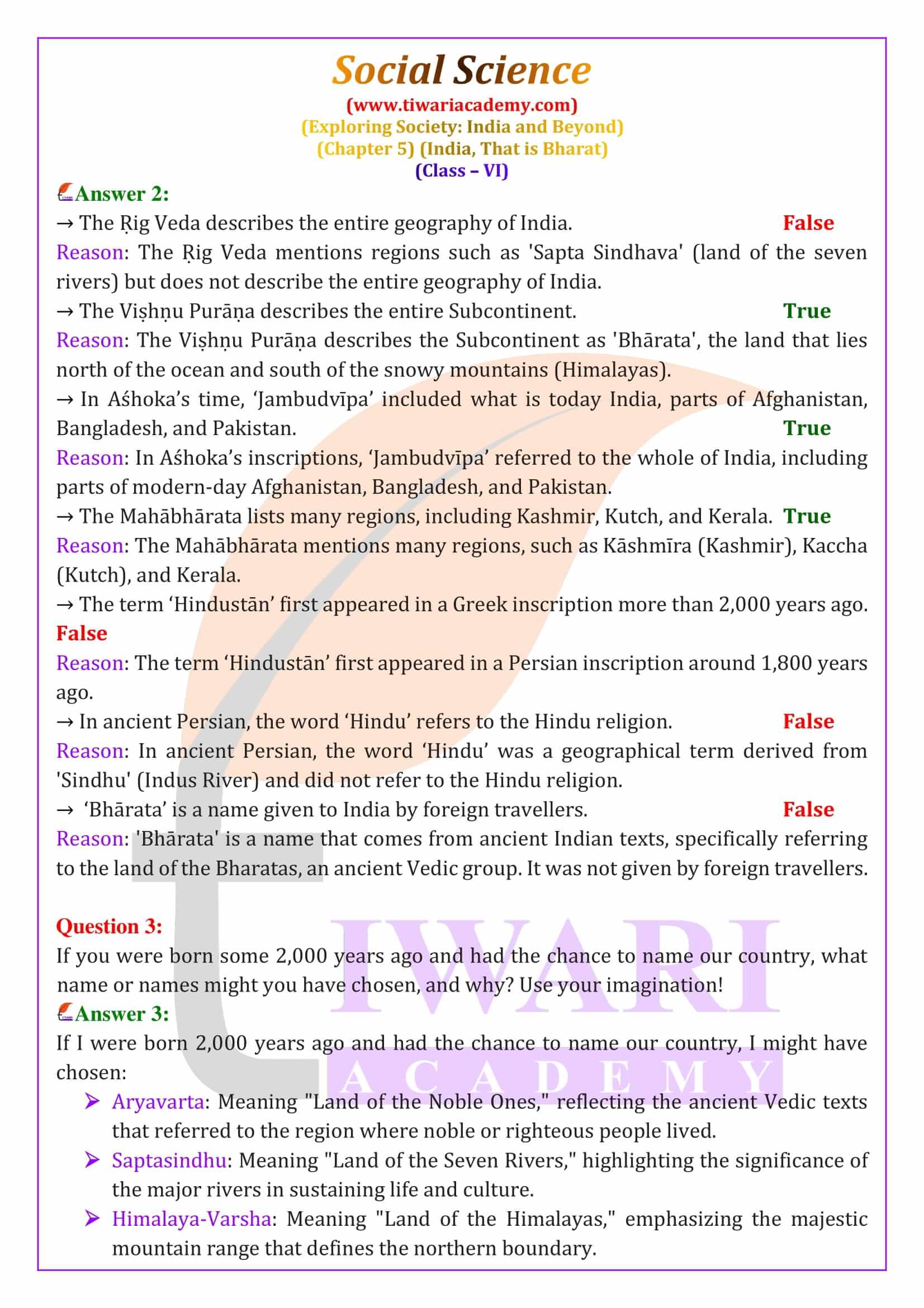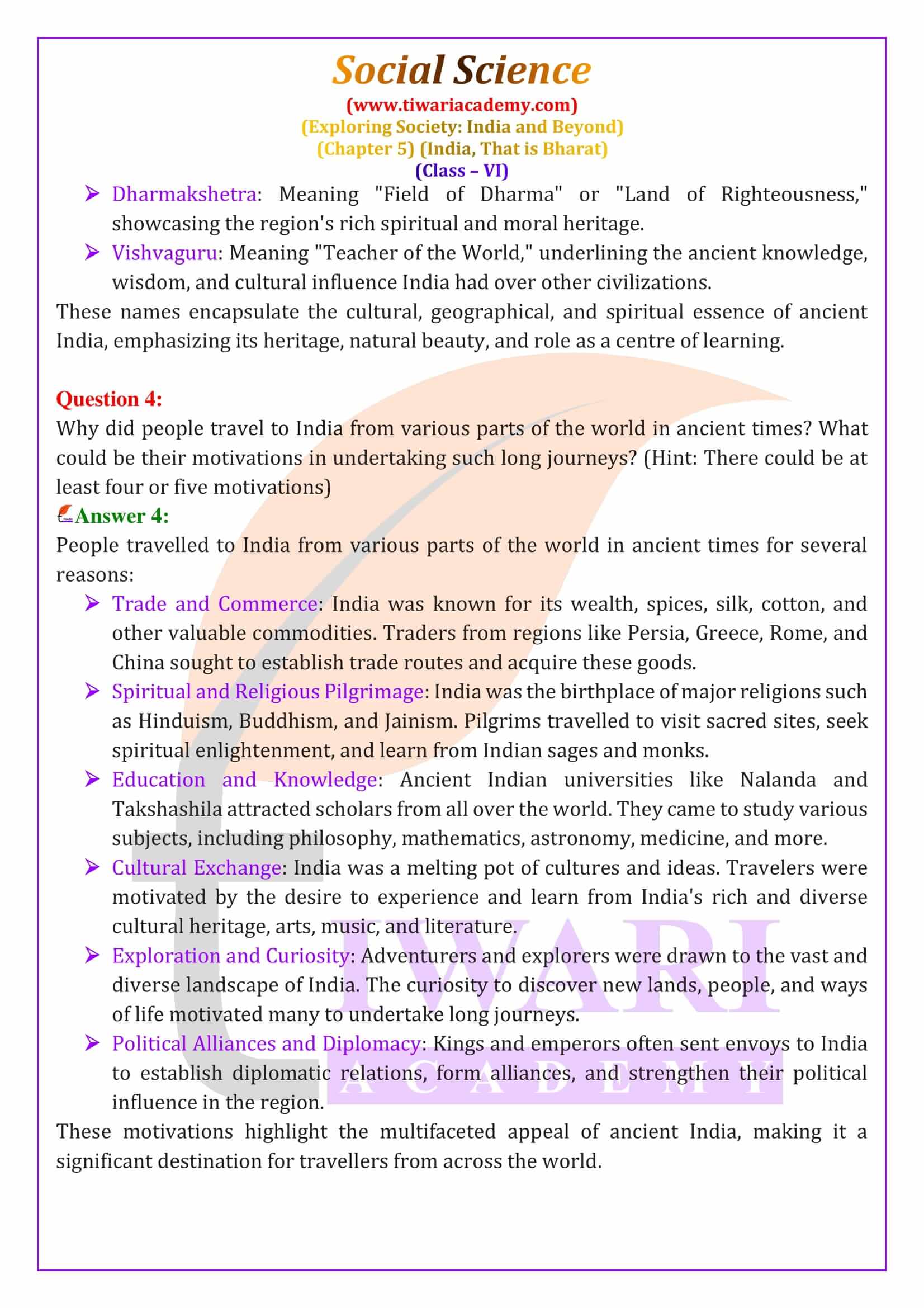NCERT Solutions for Class 6 Social Science Chapter 5 India, That Is Bharat revised and modified for session 2025-26. The Question Answers of Class 6 Social Science Chapter 5 Exploring Society – India and Beyond India Beyond in History Section is given here in simple format with all exercises.
Class 6 Social Science Chapter 5 India, That Is Bharat Question Answers
India, That Is Bharat: The Land of Many Names
India, as we know it today, is a modern nation with well-defined borders, but it wasn’t always like this. Thousands of years ago, the Indian subcontinent had different names and changing boundaries. The region’s history is rich, with various names given by its inhabitants and visitors from other lands. These names have been recorded in ancient texts, traveler accounts, and inscriptions. Each name tells a story about the region’s past and the people who lived there. By exploring these names, we learn about how the idea of India evolved over time.
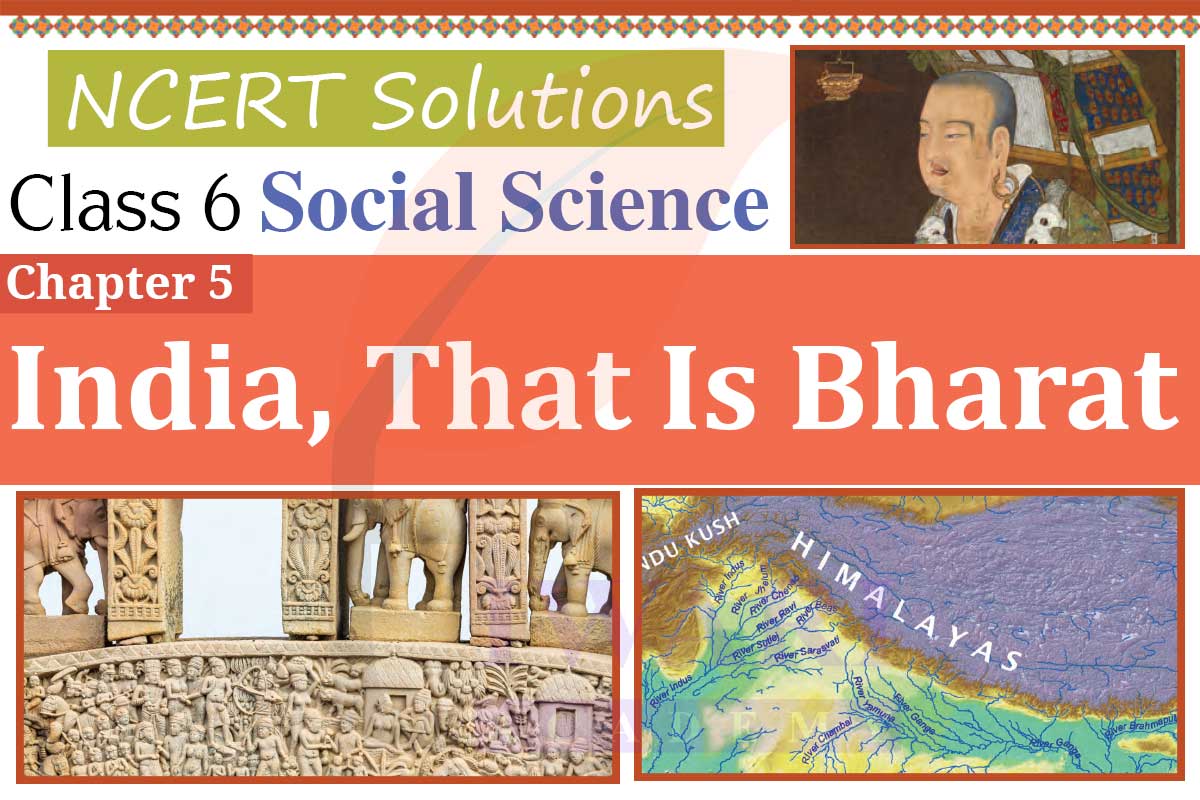
Ancient Names from Indian Texts
The earliest known name for a part of the Indian subcontinent is “Sapta Sindhava,” mentioned in the Rig Veda, the oldest Indian text. “Sapta Sindhava” means the “land of the seven rivers,” referring to the region around the Indus River. As time passed, other names appeared in ancient literature. The Mahabharata, a famous Indian epic, mentions regions like Kashmir, Kutch, and Kerala. These names show that the people of ancient India had a deep understanding of their geography and used it to define their land.
The Emergence of “Bharatavarsha”
One of the first names that covered the entire Indian subcontinent was “Bharatavarsha,” found in the Mahabharata. The name “Bharatavarsha” means “the land of the Bharatas,” a group mentioned in the Rig Veda. Over time, this name became widely accepted. Another ancient term, “Jambudvipa,” also referred to the Indian subcontinent. The name “Jambudvipa” comes from the jambul tree, which is native to India. Both “Bharatavarsha” and “Jambudvipa” were used to describe the vast and diverse land that we now call India.
The Influence of Emperor Ashoka
A significant figure in Indian history, Emperor Ashoka, who ruled around 250 BCE, used the name “Jambudvipa” in his inscriptions to describe his empire. His kingdom included not just present-day India but also parts of Bangladesh, Pakistan, and Afghanistan. Ashoka’s use of “Jambudvipa” shows that even in ancient times, the concept of a unified land covering the Indian subcontinent was recognized. This ancient name helps us understand the geographical and cultural unity that existed in India even before modern times.
The Name “Bharat” and Its Endurance
Over the centuries, the name “Bharat” became the most common term used to describe the Indian subcontinent. An ancient text called the Vishnu Purana describes “Bharata” as the land north of the ocean and south of the snowy mountains, which we know as the Himalayas. This description fits the geography of India and shows that the name “Bharat” has deep historical roots. Today, “Bharat” is still used to refer to India, and it remains a symbol of the country’s long and rich history.
Foreign Names for India
India’s name has also been shaped by foreign visitors and invaders. The Persians, who lived in what is now Iran, were among the first to mention India. They called it “Hind,” “Hidu,” or “Hindu,” based on the Indus River, which they called “Sindhu.” The Greeks, who followed the Persians, adapted this name to “Indoi” or “Indike.” These names highlight how the land of India was seen and named by different cultures that interacted with it over the centuries.
The Legacy of “India” and “Bharat”
Today, the name “India” is used internationally, while “Bharat” is commonly used within the country. Both names reflect India’s long history and its connections with the rest of the world. The Indian Constitution acknowledges this dual identity by using the phrase “India, that is Bharat.” This phrase honors the country’s ancient heritage while embracing its modern identity. Understanding the many names of India helps us appreciate the country’s diverse and rich cultural history, which continues to influence its present and future.

